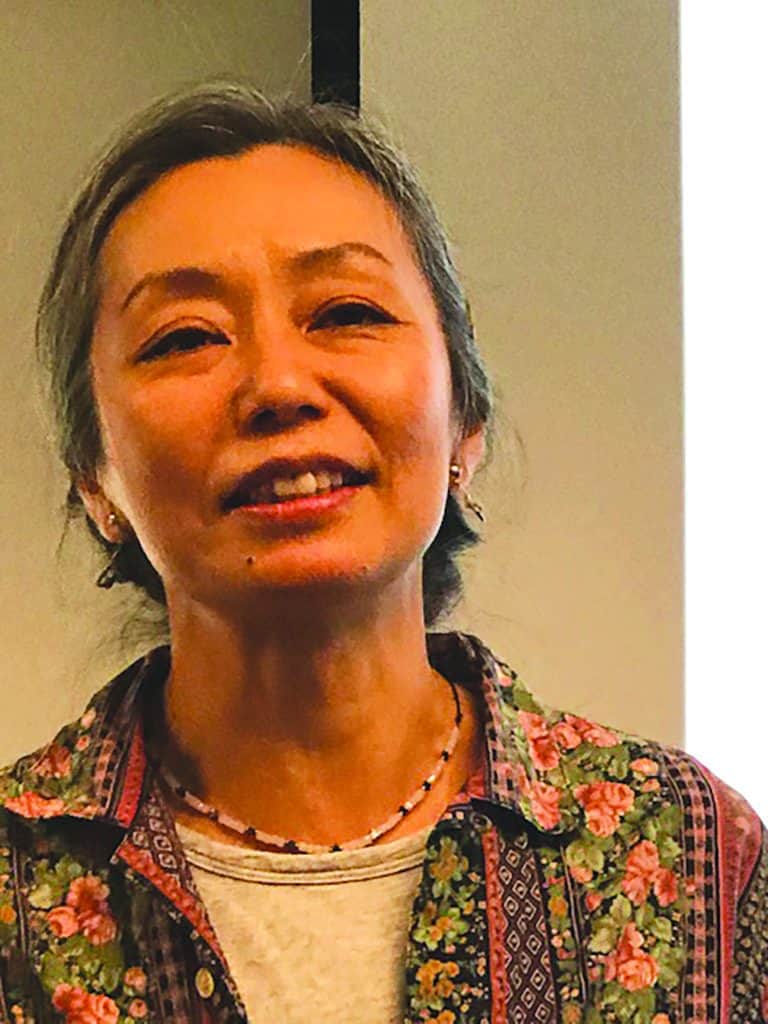
By Curt Peterson
Chiho Kaneko refers to herself as a “resident alien” — the chef has retained her Japanese citizenship since moving here in 2001 and now lives in Hartland.
“There is no such thing in Japan as ‘dual citizenship,’” she explained to a group of people in a presentation about the evolution of Japanese cuisine at Hartland Library conference room on Oct. 24.
Kaneko who is a singer, environmental activist and amateur theatrical director in addition to being a chef, said the community-supported agriculture movement started in Japan in the1960s and 1970s.
World War II had brought many changes to traditional Japanese cooking. Rural people were made to provide food for the soldiers.
“The farmlands were ravaged. People were diluting rice to stretch it,” she said.
When the war was over, the United States had a food surplus on which the Japanese became dependent. U.S.-provided wheat and powdered milk became staples during the 1950s.
“It was a period of rapid industrialization,” Kaneko said. “Parents, teachers and kids were lured to the cities. Agricultural production went down. There was terrible pollution, and mercury poisoning.”
In the late 1960s and 1970s Japan developed a growing interest in “safe food” grown locally.
“This was when the Community Supported Agriculture movement developed,” Kaneko said.
Iwate, Kaneko’s home, is one of 47 state-like prefectures in Japan and named for Mount Iwate, a half hour from her village.
Compared to Vermont’s area, 25,000 square kilometers, Iwate is 15,000 square kilometers, but Iwate’s current population of 1,220,000 is about twice Vermont’s.
“Iwate has always been known for its agriculture,” she said, describing the evolution of rural Japanese cuisine.
The traditional Japanese kitchen had a dirt floor and multiple ovens. Horses lived in homes with the people, and kitchens had huge vats for making horse feed. Cooking was done over wood fires.
“My grandma had a woodstove, but she is dead and the woodstove is gone,” Kaneko said, smiling.
Today Iwate kitchens use LP gas as fuel.
In the 17th century, rice was used as currency in Japan. People in Iwate were forced to grow rice to provide wealth to the lords. “Mochi,” which is rice pounded and pulverized into a paste and often shaped into balls for cooking, has been a staple in Japanese cuisine since ancient times.
Frequent famines forced rural people to forage for “edibles”, such as bracken (fiddleheads), chestnuts, mushrooms, acorns and walnuts. People also grew home gardens, raising eggplant, potatoes and corn they planted as seedlings. Plentiful Japanese plums, which are green and firm when ripe, are used to make many food products, including pickles and plum liquor.
Country people also cultivated burdock, considered a nuisance weed by Vermonters, sweet potatoes and daikon, a type of radish. Educated by the famines, Japanese cooks dried the leaves of much of their produce to save and use to make soups.
“They called it ‘survival food,’” Kaneko said.
Fermentation is also a popular means of preparation, she said. Taro stalks were chopped, dried and used to make soups. Persimmons were peeled and dried.
Miso soup, now popular in Asian-American restaurants, was made from boiled soybeans and a mold called “koji” that grows on cooked rice grain. Soybean paste and koji are also used to make sake and soy sauce today.
The nation was supporting a rebirth of agriculture and good fresh food through the oil crises of 1973 and 1978-9 and the great Tohuko earthquake and resulting tsunami that led to the Fukushima nuclear reactor meltdown.
Kaneko is suspicious of the current trend in Japan, which she calls “food on demand” and “food from everywhere.”
“People used to eat humbly as a rule,” Kaneko said. “On special days they might eat better. Now everybody eats like every day is a special day.”
She wonders if this lifestyle is sustainable.
“Japanese people eat way too much fish,” she said. “They are rapidly depleting the stock. Disciplined eating in moderation is beneficial. It will take a grassroots movement. Waiting for governments to do something won’t work.?




